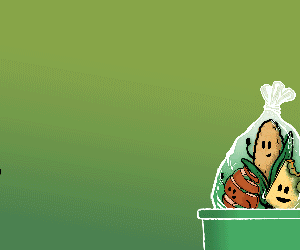
You may already be aware that pollinators are important to everyone on the planet. But did you know that one in every three bites of food is made possible by native pollinators?
Pollinators such as bees, butterflies, flies, bats and hummingbirds transfer pollen between flowers and other plants, helping them grow and produce the fruit and vegetables we all eat — and that our beloved pets eat.
Because pollinators help grow the pumpkins, apples and cranberries used to make Beyond, a sustainability-minded natural pet food, the team has collaborated with The Nature Conservancy to initiate Project Blossom, with the mission of helping protect the declining population of pollinators. Purina’s Beyond has donated $100,000 to The Nature Conservancy to help its mission to support a healthy planet, to protect pollinators.
“The Nature Conservancy works around the globe to protect pollinators from challenges such as the loss and degradation of habitat, climate change and more,” said Chris Helzer, director of science for the Nature Conservancy in Nebraska. “By partnering with Beyond and being a part of Project Blossom, we are advancing our work to support a healthy planet for pollinators and all the other species we rely on for a healthy ecosystem.”
How you can help
Here are some simple things you can do to help pollinators thrive. They are fun, easy and educational projects you can enjoy with the whole family, especially while you’re spending more time at home and in your own yard and garden.
1. Learn
Kids find pollinators fascinating, and there’s a lot to learn about what they do for our ecosystem.
- Visit The Nature Conservancy website as a starting point to discover more about how pollinators work.
- Check out other websites, books or local outdoor gardens to explore native plants and pollinators that live in your area.
- Make a list, map and/or photo project to describe what kinds of pollinators help which plants grow in your region.
- Seek out resources to learn more about different types of pollinators and the threats they face. For example, when most people talk about bees, they assume honeybee, but there are more than 5,000 species of bees found in North America alone that need our support.
2. Plant
Once you’ve identified regional plants, flowers and shrubs that pollinators love, decide which ones to add to your outdoor space.
- Involve the whole family in growing a variety of pollinator-friendly plants outside your home.
- Avoid using pesticides in your yard or garden and learn which ones are least likely to affect bees and pollinators.
- If you have limited outdoor space, use a small raised garden bed or a planter on your deck, balcony or patio.
- Set up a pollinator window box.
3. Make
Collect supplies, like pieces of wood, and involve your kids in making a small project to help sustain pollinator communities in your own backyard.
- Build a bee house, bat house or insect house to attract pollinators and give them shelter.
- Create a fresh water feature like a pond or bird bath that pollinators can use for drinking.
4. Donate
Make a monetary contribution to the cause.
- Make a donation to The Nature Conservancy, which helps conserve and protect land and water around the world.
- Consider encouraging donations from friends and family.
5. Share
An easy way to spread awareness about pollinators is to create a conversation about them on social media.
- Share the Project Blossom website with friends and family.
- Post pictures of your pollinator projects or gardens to inspire others to join your efforts.
“We’re committed to keeping pets healthy and happy, which is why we’re committed to helping protect our planet and ultimately, pollinators that play an important role in our ingredient sourcing,” said Diane Herndon, senior manager of sustainability at Purina Beyond. “At Beyond, we hope Project Blossom will inspire people everywhere to help protect pollinators that play a vital role in nutritious ingredients that go in our cat and dog recipes.”
Visit BeyondPetFood.com/ProjectBlossom to learn more about what you can do to help your neighborhood be a friendlier place for much-needed pollinators.












